Darrieus Wind Turbine CFD Simulation using Dynamic Mesh 6DOF method, ANSYS Fluent Training
$160.00 $80.00 Student Discount
- The problem numerically simulates the Darrieus Wind Turbine motion using ANSYS Fluent software.
- We design the 3-D model by the Design Modeler software.
- We mesh the model with ANSYS Meshing software. The element number equals 2,966,928.
- We use the 6DOF Dynamic Mesh method to define the turbine rotation.
- Remeshing and Smoothing mesh methods are also used.
To Order Your Project or benefit from a CFD consultation, contact our experts via email (info@mr-cfd.com), online support tab, or WhatsApp at +44 7443 197273.
There are some Free Products to check our service quality.
If you want the training video in another language instead of English, ask it via info@mr-cfd.com after you buy the product.
Description
Description
The Darrieus wind turbine is a type of vertical axis wind turbine (VAWT) used to generate electricity from wind energy. The turbine consists of several curved aerofoil blades mounted on a rotating shaft or framework. The curvature of the blades allows the blade to be stressed only in tension at high rotating speeds.
The blades of a Darrieus turbine can be canted into a helix, e.g., three blades and a helical twist of 60 degrees. Since the wind pulls each blade around on both the windward and leeward sides of the turbine, this feature spreads the torque evenly over the entire revolution, thus preventing destructive pulsations.
In this case, a Darrius wind turbine with 6blade is exposed to wind with a speed of 23 m/s. The rotation of the turbine is modeled with the Dynamic Mesh 6DOF method.
The present model in the 3-D domain of this simulation has been designed in ANSYS Design Modeler. Domain has two parts: flow domain and body of influence around the turbine. The domain contains a velocity inlet, pressure outlet, and wall for the earth.
The meshing of this present model has been generated by ANSYS Meshing software. The mesh grid is unstructured; the total cell number is 2,966,928 elements and 720300 nodes. The figure below shows an overview of the performed mesh.
Methodology: Darrieus Wind Turbine CFD Simulation using Dynamic Mesh 6DOF method
In this simulation, the rotation is modeled with the Dynamic Mesh 6DOF method, which simulates the turbine rotation based on its moment force.
Conclusion
In the simulation results, the turbine’s rotation is clear. The vortices resulting from the collision of the flow and the turbine in motion are known in the speed contour. In the created vortex velocity contour, the same Van Karman vortices can be seen.
The presented pressure contour also shows the pressure changes in the domain and the environment around the blades. Also, The leading edge of the turbine wall suffers from the highest-pressure gradient, which is logical since the velocity has just met zero.
Additionally, the streamlines vectors illustrate the quality of the flow streams resolved in the wake section, which is the core challenge of aerodynamic simulation. The provided turbulence contour accurately shows the resulting turbulence.
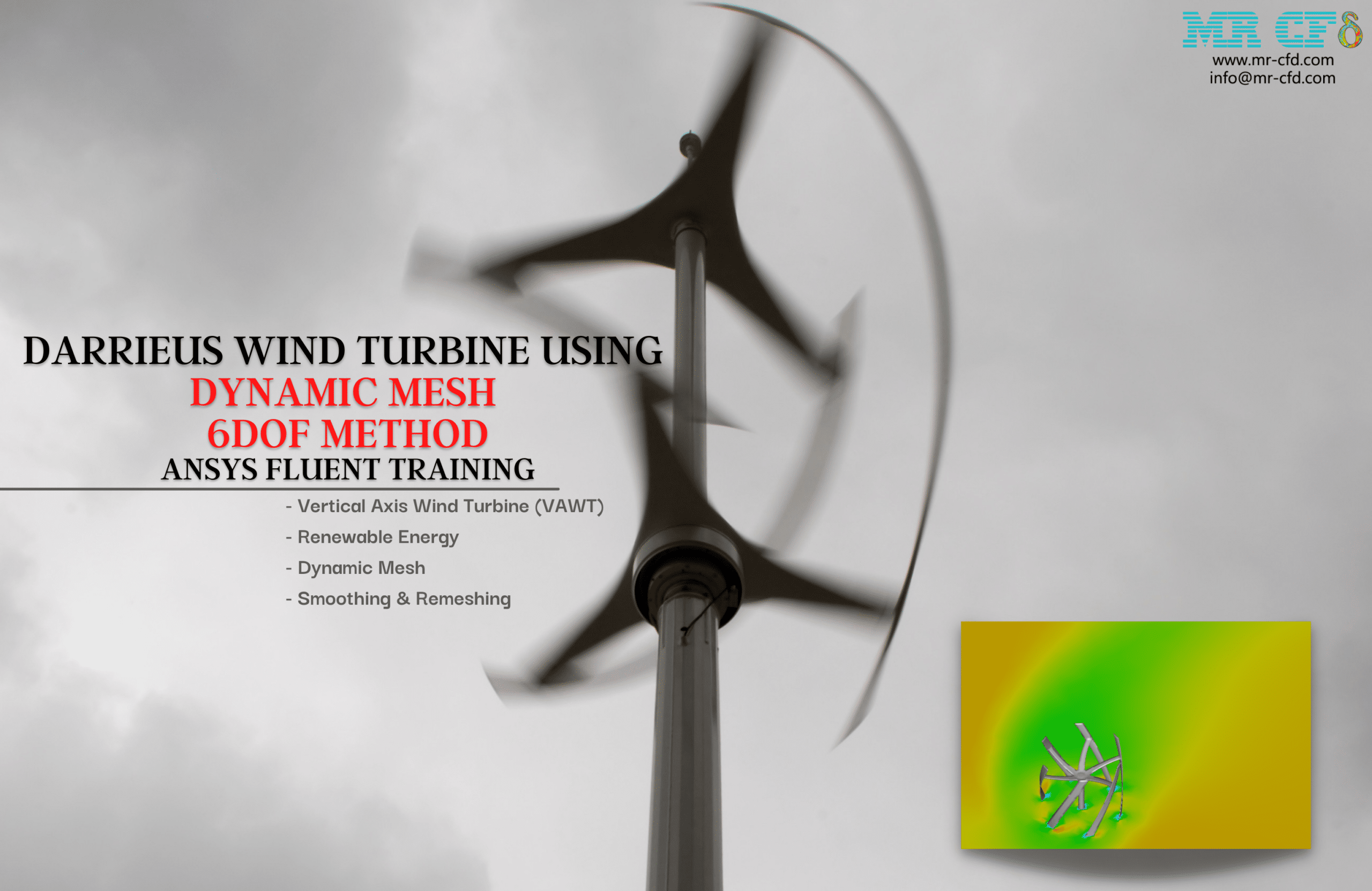
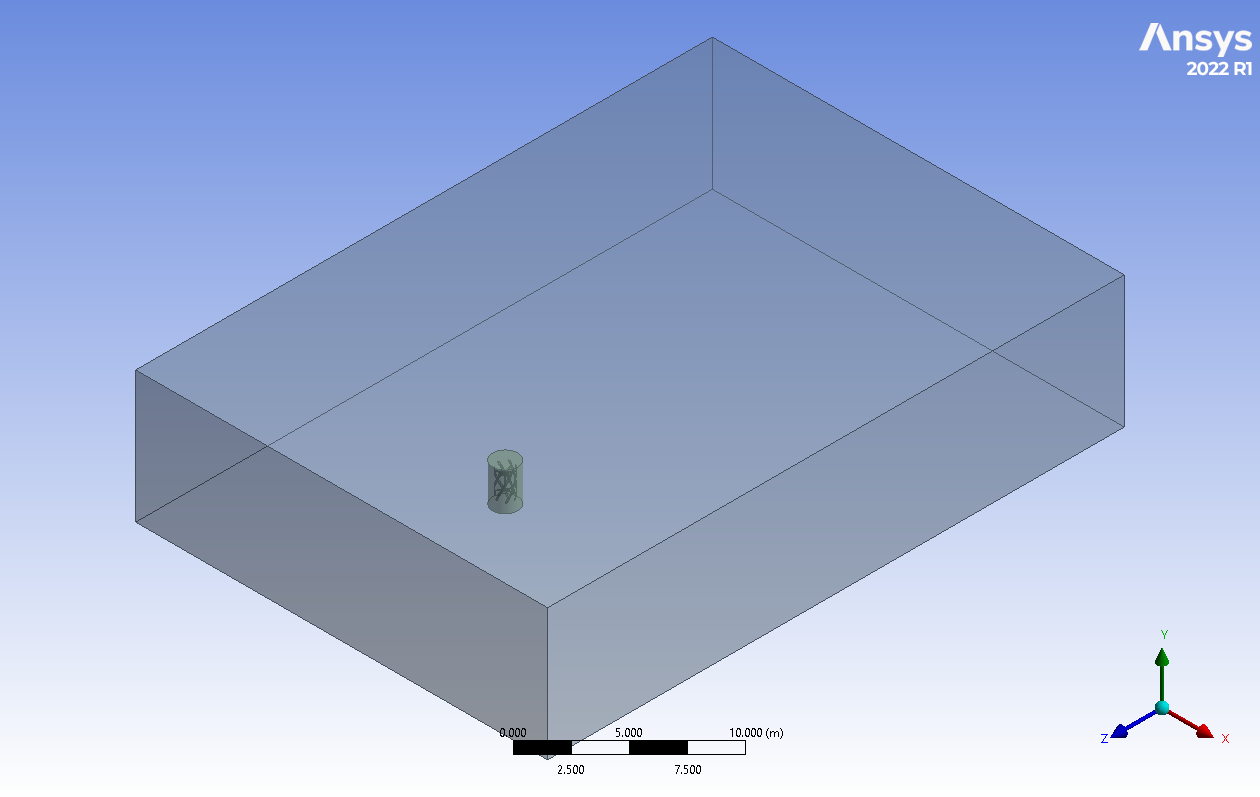


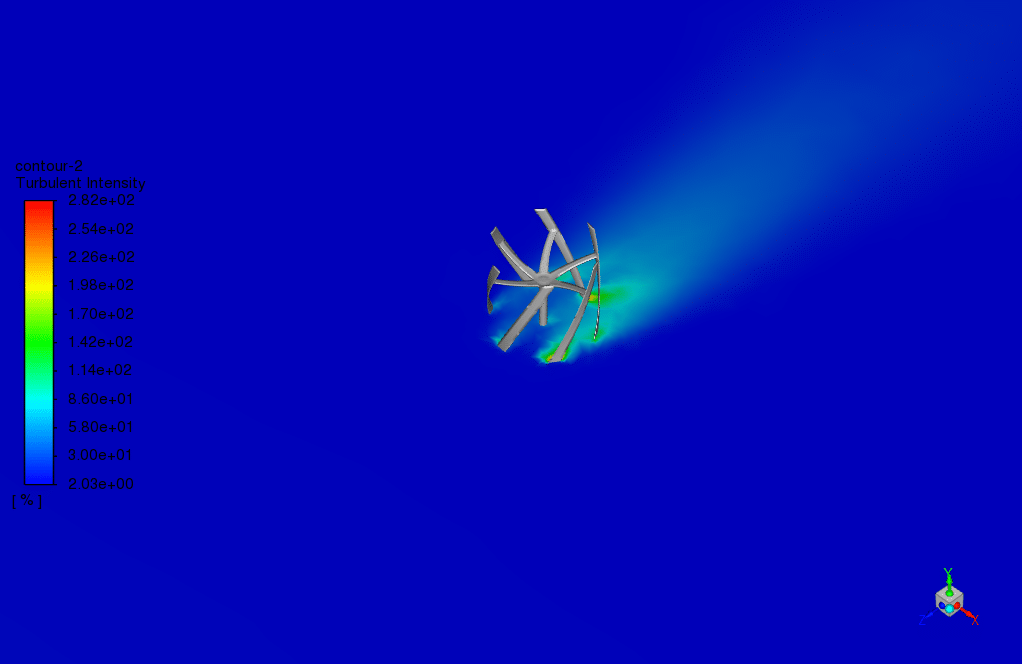


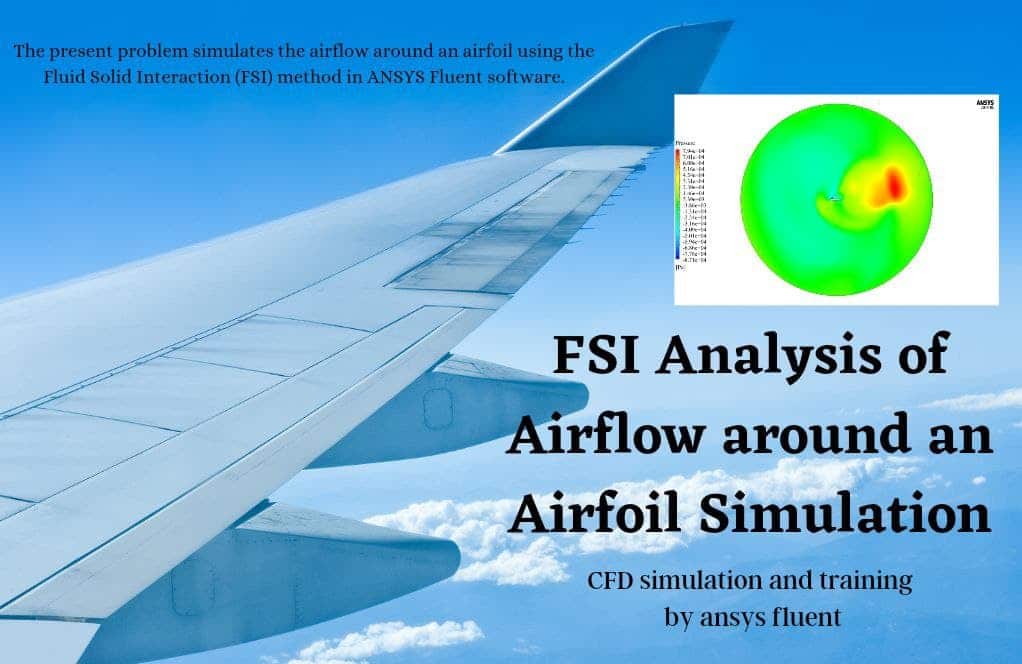
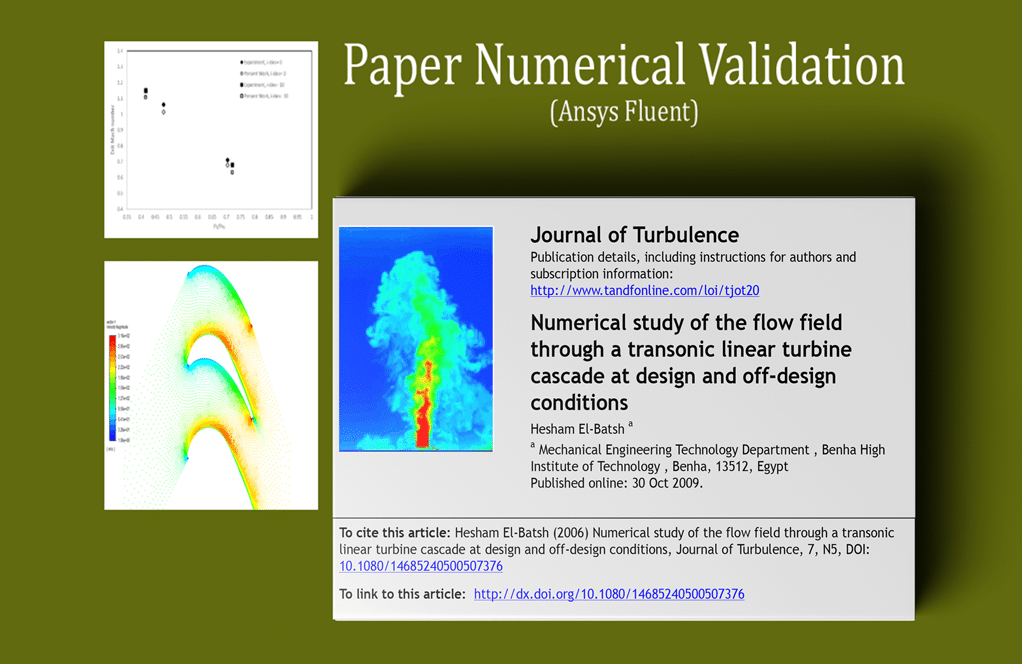

Mrs. Lisette Huel –
The Darrieus Wind Turbine simulation was extremely helpful in understanding VAWT mechanics. I was particularly impressed with the accuracy in the wake section portrayal, capturing the aerodynamic challenges flawlessly. Incredible learning tool!
MR CFD Support –
Thank you for your kind words! We are thrilled to hear that our Darrieus Wind Turbine simulation provided you with valuable insights into the mechanics of vertical axis wind turbines and helped you visualize the complex aerodynamic phenomena. Your appreciation is what inspires us to keep improving our products. If you have any more questions or need further assistance, don’t hesitate to reach out.
Ethelyn Powlowski –
This was my first time using a CFD software, and I’m amazed with the precision and details I could grasp thanks to the Darrieus Wind Turbine simulation training. Being able to see the wind vortices and turbine rotation was really insightful. Well done on a great training tool!
MR CFD Support –
Thank you for sharing your experience with our Darrieus Wind Turbine simulation training. We are delighted to hear that you found the tool precise and insightful, and we’re glad it could help enhance your understanding of CFD in aerodynamics. Your acknowledgment truly matters to us. If you have any more feedback or need further assistance in your CFD learning journey, we’re always here to support you!
Alaina Keebler –
I appreciated the detailed explanation of the Darrieus wind turbine simulation, especially how the 6DOF dynamic mesh contributed to the realistic rotation modeling. The visualization of vortices in the speed contour was particularly illuminating. Great training material for understanding complex aerodynamic simulations!
MR CFD Support –
Thank you for your kind words! We’re delighted to hear that you found the training material for the Darrieus wind turbine simulation informative and illuminating. The inclusion of the 6DOF dynamic mesh is indeed essential for realistic rotation modeling, and we’re glad it enhanced your understanding of aerodynamic simulations. If you ever have any questions or need further clarification, please do not hesitate to reach out. Thank you for choosing our training products!
Miss Willie Goyette MD –
I’ve always been so impressed with vertical axis wind turbines. The details here demonstrate the simulation’s intricacies so well. The ability to see pressure changes, vortex patterns, and streamlines offers such a vivid understanding of aerodynamics.
MR CFD Support –
We’re delighted to hear about your positive feedback and enthusiasm for vertical axis wind turbines! It’s great to know that the simulation details provided you with a comprehensive view of the aerodynamics effects at play. Thank you for your kind words.
Amaya Collins –
I found the use of the Dynamic Mesh 6DOF method in simulating the turbine’s rotation really fascinating. The simulation appeared to capture the complexity of the aerodynamics involved really well!
MR CFD Support –
Thank you for your positive feedback about our Darrieus Wind Turbine CFD Simulation using the Dynamic Mesh 6DOF method! We are pleased to hear that the complexity and details of the aerodynamics have been well captured and provided insights into the turbine’s performance. Your appreciation motivates us to continue delivering high-quality simulations. If you have any further queries or need additional support, please don’t hesitate to reach out.
Corbin Trantow –
I am extremely impressed by the level of detail in the Darrieus Wind Turbine simulation results, particularly the streamlined vectors and the accuracy of the turbulence contours. The 6DOF dynamic mesh method’s ability to capture the Van Karman vortices illustrates the high-quality aerodynamic simulation achieved.
MR CFD Support –
Thank you for your kind words! We are delighted to know you’re impressed with the Darrieus Wind Turbine CFD simulation results using the dynamic mesh 6DOF method. Our team works diligently to ensure high accuracy in our simulations, and the recognition of specifics such as the Van Karman vortices corroborates the quality of our efforts. Thank you for choosing our learning products, and we are here to provide continued support and more high-fidelity simulations in the future.
Benton Champlin I –
This product sounds intriguing! The combination of practical application and advanced simulation techniques is really impressive. Excellent job on creating such comprehensive training material.
MR CFD Support –
Thank you so much for your positive feedback! We are thrilled to hear that our Darrieus Wind Turbine CFD Simulation training with the Dynamic Mesh 6DOF method has impressed you and met your expectations. Our team strives to provide quality content that is both practical and educational. If you have any more questions or need further assistance, please don’t hesitate to reach out.
Harrison Purdy –
This review is simply a compliment. The level of detail in simulating the Darrieus Wind Turbine using the Dynamic Mesh 6DOF method is impressive. I’m particularly pleased with the accuracy of the turbulence contour and the clarity of the rotation and pressure changes presented. Great product!
MR CFD Support –
Thank you so much for your kind feedback! We are thrilled that you are satisfied with the simulation’s high level of detail and accuracy. It’s great to hear that our product met your expectations. Your support is very much appreciated!
Aditya Reilly –
I recently completed the Darrieus Wind Turbine CFD Simulation using Dynamic Mesh 6DOF method, and it was an educational experience. The various aspects like flow domain setup, blade curvature, and especially the implementation of the Dynamic Mesh 6DOF method greatly enhanced my understanding of aerodynamics in simulation. I was impressed with the comprehensive explanation of creating vortices and pressure contours. Watching the turbine rotation and evaluating the resulting vortices in the speed contour was quite insightful.
MR CFD Support –
Thank you for your positive feedback on the Darrieus Wind Turbine CFD Simulation training. We’re delighted to hear that the content was enlightening and helped to enhance your understanding of aerodynamics and simulation. It’s reassuring to know that the simulation’s features, especially the Dynamic Mesh 6DOF method, were effectively demonstrated and aided in comprehending the complexities of wind turbine simulations. Your satisfaction is our priority, and we appreciate you taking the time to share your rewarding experience with the learning product.
Dan Bergstrom –
I’ve always been fascinated by the concept of VAWTs. Your explanation on how the Dynamic Mesh 6DOF method was applied to simulate turbine rotation is enlightening. This seems to be difference maker for accurately capturing the complexity of the flow around the blades. Well structured and comprehensive training material!
MR CFD Support –
Thank you for your kind words! We’re glad to hear you found the material on the Darrieus Wind Turbine simulation using the Dynamic Mesh 6DOF method enlightening. At MR CFD, we strive to provide comprehensive and detailed training to help our customers understand complex simulations clearly. It’s wonderful to know that we are succeeding in this. If you ever have any further questions or need more training, we’re here to help!
Miss Amy Balistreri MD –
I really enjoyed learning from the ‘Darrieus Wind Turbine CFD Simulation using Dynamic Mesh 6DOF method, ANSYS Fluent Training’ course. The details on setting up and solving the simulation inspire confidence. One aspect I was very impressed with was the clarity with which the complex Dynamic Mesh 6DOF method was explained.
MR CFD Support –
We’re delighted to hear that our course on Darrieus Wind Turbine CFD Simulation met your expectations and helped clarify the Dynamic Mesh 6DOF method. Thank you for sharing your positive experience! Your feedback is greatly appreciated as it inspires us to continue delivering high-quality learning materials. If you have further questions or need assistance with future simulations, don’t hesitate to reach out!
Marlene Lesch –
I’m highly impressed with the Darrieus Wind Turbine simulation and its detailed experiment design! I found the results extremely insightful, especially regarding the pressure distribution and flow streamlines that show the aerodynamic performance of the turbine. Splendid work on capturing the complex phenomena!
MR CFD Support –
Thank you for your positive feedback! We’re glad to know that you found our Darrieus wind turbine simulation insightful and that it met your standards for aerodynamic performance analysis. Should you have any further inquiries or need additional information on any of our products, please feel free to reach out. We appreciate your interest and are always here to assist.
Rolando Dickinson –
I am fascinated by the application of the 6DOF method in this simulation! Can you provide more insights into how it enhances the accuracy for modeling the dynamic behavior of the turbine?
MR CFD Support –
The 6DOF (Six Degrees of Freedom) method takes into account the movement of the turbine in all three translational movements along the x, y, and z axis, as well as the rotational movements around each of these axes. This method enhances the accuracy of the simulation as it allows for a more realistic representation of the turbine’s response to aerodynamic forces. By capturing both translational and rotational dynamics, engineers can understand how various factors such as wind speed, direction, and torque can affect the real-world performance of the turbine.
Santino Lueilwitz –
The methodology in creating a dynamic mesh simulation was new to me. The way each step was laid out with clarity in your educational material was incredibly helpful. I didn’t think I would grasp the concept of the Dynamic Mesh 6DOF method so quickly!
MR CFD Support –
Thank you for your positive feedback! We’re thrilled to know that our educational material was clear and helpful for you in understanding the Dynamic Mesh 6DOF method. Our goal is always to provide comprehensive learning resources that make complex concepts accessible to our users. We appreciate your support and are here if you have any further questions.
Peter Metz –
I’m in awe of the impressive dynamic mesh technology! Can it reflect changes in environmental conditions such as gusts of wind in real-time as well?
MR CFD Support –
Yes, dynamic mesh technology allows for the model to react to real-time changes in environmental conditions like wind gusts. The tech adjusts the computational grid dynamically, so if the simulation parameters include variable wind speeds, the mesh will adapt to provide accurate results in response to those shifts.
Kenya Casper –
The hands-on experience I gained from the Darrieus Wind Turbine CFD Simulation using the Dynamic Mesh 6DOF method in ANSYS Fluent was essential for understanding the real-world aerodynamic challenges faced by VAWTs. The course was well-structured, offering both theoretical knowledge and practical application, which is crucial for learners like me. I’m truly impressed by the complexity of the simulation and the quality of the results that are particularly insightful for visualizing the flow dynamics around the turbine blades.
MR CFD Support –
We’re thrilled to hear that our Darrieus Wind Turbine CFD Simulation course has provided you with hands-on experience and valuable insights into aerodynamic simulations for vertical axis wind turbines. Thank you for sharing your positive feedback, and we look forward to providing more high-quality training that can further enhance your expertise in the field.
Aurelie Ritchie –
This simulation of Darrieus Wind Turbine is fantastic. The detailed attention to aerodynamics and inclusion of 6DOF Dynamic Mesh method provides confidence that the simulation closely mimics the real-world dynamics. Great work!
MR CFD Support –
Thank you for your kind words! We’re thrilled to hear that you are pleased with the detailed simulation of the Darrieus Wind Turbine using the 6DOF Dynamic Mesh method. Our goal is to offer high-quality and realistic simulation experiences, and we’re glad you appreciate the effort. If you need any further assistance or have more questions in the future, feel free to reach out!
Casimer Lowe –
This product review is very informative! The detailed explanation provides a clear understanding of the simulation process and the results obtained. The application of the Dynamic Mesh 6DOF method in the Darrieus Wind Turbine simulation appears to have been executed effectively, capturing the dynamics and vortex formations with high fidelity. The clarity on the handling of pressure gradients and the wake section addresses critical aspects of aerodynamics in wind turbine simulations.
MR CFD Support –
Thank you for your positive feedback! We’re delighted to hear that you found the product informative and thorough in its approach to simulating the Darrieus Wind Turbine. Our team strives to deliver high-quality CFD learning experiences, and it’s rewarding to know that the content is appreciated. Please feel free to check out our other tutorials and trainings for more insights into CFD applications.
Florine Armstrong I –
The Dynamic Mesh 6DOF method seems very complex. Could you please detail a bit more on how exactly it simulates the turbine’s movement?
MR CFD Support –
The Dynamic Mesh 6DOF (Six Degrees of Freedom) method simulates the movement by allowing the turbine to rotate and translate freely in response to the aerodynamic forces acting upon it. This method dynamically updates the mesh to accommodate the changing position and orientation of the rotating turbine blades, following the laws of physics for motion. In dualtime step iterations, the translational and rotational motions, as well as the flow field, are updated to realistically capture the complex interactions between the wind and the turbine.
Kiley Krajcik –
The detail in the dynamic mesh setup for this vertical axis wind turbine is great – can’t wait to apply this method to my own simulations! Thank you MR CFD for this insightful learning experience.
MR CFD Support –
We’re thrilled to hear that you found the Darrieus Wind Turbine CFD simulation using the Dynamic Mesh 6DOF method helpful! Your enthusiasm for applying our methods to your simulations is exactly what we aim for. If there’s ever anything else you’d like to explore or need assistance with, don’t hesitate to reach out. Thank you for your support!